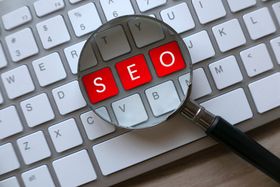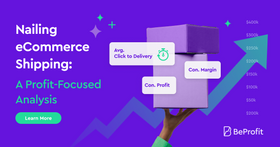5 Most Important Sales KPIs for Maximal Customer Retention
Updated April 24, 2023

No business wants to lose customers. But when customers are not engaged, whether it's because your business's site is unintuitive or your marketing doesn't appeal to them, they are more likely to move on.
So, understanding trends about past customers and the most engaged customers can help improve customer retention. This is where Key Performance Indicators (KPIs) are most vital. KPIs offer targets for teams to achieve, track goal progress, and provide insights that can help businesses grow. Let's explore some important sales KPIs for customer retention.
» Learn how to better understand your customers
1. Customer Churn Rate
The customer churn rate is the ideal metric to consider if you're looking to track how many customers are leaving versus how many stay. This should be measured for a specified period—annually, monthly, weekly, or even daily.
Customer Churn Rate (%) =
Number of Lost Customers / Number of Customers Before x 100
Typically, a higher customer churn rate results in low customer retention because it means you're losing customers often. But it can be a great way to assess where your business is succeeding and where it may need to alter your strategies. For example, if numerous customers left after a particular marketing campaign, you can use this to improve your strategies for future campaigns.
2. Sales Cycle Length
Now, you may have many potential customers, but how many of them result in a sale? This is where understanding your business's sales cycle length can help. It measures the time it takes for prospective customers to close a deal with you.
Sales Cycle Length =
Number of Days To Make Sale / Number of Sales Made
The goal should be to reduce the sales cycle length because if more purchases are made in shorter periods, your bottom line is impacted positively. However, business-to-business sales generally have longer cycles because they involve multiple people consulting with one another before closing a deal, as opposed to an individual customer deciding to make a purchase.
Longer sales cycles could lead to lower customer retention. For example, if your target market doesn't know your company well, their hesitancy may be higher, which means the sales cycle will be longer, and a completed purchase will be less likely.
3. Average Conversion Rate
A conversion rate calculates how many site visits result in desired actions (conversions), like completing a purchase or signing up for a newsletter. This should usually be measured over consistent periods of time (like, weekly or monthly). Across multiple industries, the average conversion rate is 2.5%, so anything below this could impact your customer retention and profits negatively.
Average Conversion Rate (%) =
Number of Conversions / Total Number of Visitors x 100
Knowing your business's average conversion rate will allow you to track the success of the various steps you’ve taken along the way. For example, if you have a high conversion rate, you can deduce that the amount of money you've put into advertising has paid off.
If you have a low average conversion rate, your customer retention may be low, too. So, adjusting your strategy for conversion can help retain customers and improve your bottom line.
» New to e-commerce? Check out the best conversion rate metrics
4. Customer Acquisition Cost
Customer acquisition cost (CAC) refers to the approximate cost to acquire a new customer. This can include advertising and marketing campaigns' expenses, marketers' salaries, equipment, overhead costs, and more. It's important to factor in the total of all the costs that went into securing new customers.
CAC = Total Costs / Total Customers Acquired Over a Certain Period
CAC can get expensive. It naturally takes more money to acquire new customers than to retain them. So, by focusing your efforts on CAC more than retention, you could be losing profits. An example of how you can implement this KPI is to focus your resources on acquisition when starting your business, then direct more costs to retain the customers you've successfully acquired.
» Discover how you can use email marketing to improve customer retention
5. Customer Lifetime Value
When attempting to maximize your sales potential, you should measure customer lifetime value. Simply put, it’s the amount of money you estimate a customer will spend with your business or on your products over a lifetime. You can also use this to compare the performance between certain campaigns by using data from the period in which the campaigns were active.
To calculate the customer lifetime value, you first need to calculate the customer value.
Customer Value ($) = Average Sale Value x Average Number of Sales
Using this, you can then calculate the customer lifetime value.
Customer Lifetime Value ($) =
Customer Value x Average Customer Lifespan
Let's look at an example to contextualize. Say Shop X has an average sale value of $30 and, on average, a customer buys products three times a year for 3 years:
Customer Lifetime Value ($) = Average Sale Value x Average Number of Sales
= $30 x 3
= $90
Customer Lifetime Value ($) = Customer Value x Average Customer Lifespan
= $90 x 3
= $270
This statistic can give you an idea of what to expect from an average customer throughout your business relationship. A higher customer lifetime value could indicate higher customer retention, which would benefit your bottom line. A lower value can help you change strategies and, perhaps, allocate funds for bringing in more high-value customers.
» Are you a Shopify user? Check out this guide to Shopify sales reports
KPIs Can Help Improve Your Customer Retention
Tracking these KPIs can help you better understand the trends of loyal customers and those who have moved on from your business. Utilizing these KPI metrics can also help you strategize improved methods to increase customer retention and help your business grow.
This can get overwhelming quickly. But don't worry, BeProfit can help you monitor and manage these metrics. Then, using the data results, you can focus on optimizing customer experiences and strategizing improved ways to lower acquisition costs and increase customer retention.








